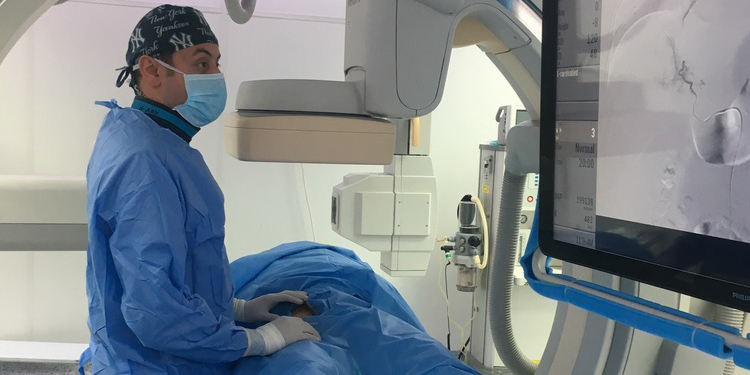
Hemodialysis
Hemodialysis is a medical procedure used to treat individuals with kidney failure. It involves using a dialysis machine to filter and clean the blood when the kidneys are unable to perform this function adequately. The process helps remove waste products and excess fluids, maintaining a balance of electrolytes in the body. During hemodialysis, blood is circulated out of the body, filtered through a dialyzer, and then returned to the patient's bloodstream. This treatment is essential for managing symptoms and sustaining life in cases of severe kidney dysfunction. Hemodialysis is typically performed multiple times a week, and the frequency depends on the individual's specific medical needs.
Dialysis Access Management Procedures
For patients requiring dialysis, different techniques are employed to access the bloodstream for blood cleaning through a dialysis machine. Our interventional radiologists collaborate with patients to determine the most suitable method for their needs.
1-Dialysis Grafts:
- Surgically created in the arm by directly connecting an artery to a vein without plastic graft material.
- Requires a dialysis catheter while maturing.
- Vein enlargement allows needle access at dialysis.
- Lasts up to 10 years, preferred over grafts or catheters.
2-Dialysis Fistulas:
- Surgically created in the arm by directly connecting an artery to a vein without plastic graft material.
- Requires a dialysis catheter while maturing.
- Vein enlargement allows needle access at dialysis.
- Lasts up to 10 years, preferred over grafts or catheters.
3-Dialysis Catheters:
- Comprises two plastic tubes for blood removal and return during dialysis.
- Used when other methods are not possible.
- Higher infection risk, not ideal for long-term use.
Interventional Radiology Procedures:
4-Fistulogram:
- IV contrast was injected to identify narrow areas in the fistula or graft.
- Balloon angioplasty expands narrowed blood vessels.
- Metallic stents are placed if needed to keep the vessel open.
5-Declot Procedure:
- Used when a fistula or graft becomes completely clotted off.
- Clot removal and treatment of identified narrowings with angioplasty or stenting.
6-Steal Correction:
- Addresses excess blood flow from the artery to the vein causing pain and numbness.
- Doppler ultrasound or fistulogram to evaluate, followed by placing a small metal clip to reduce blood flow.
What to Expect:
- Preparation involves fasting eight hours before the procedure.
- Medications administered intravenously induce relaxation.
- Patients are observed post-procedure, and stitches may be removed before discharge.
Experience Specialized Dialysis Access Care with Dr. Mohamed Hosni
If you or a loved one requires personalized and expert care for dialysis access management, Dr. Mohamed Hosni is here to help. With a commitment to optimal outcomes and patient well-being, Dr. Hosni and his team provide comprehensive interventional radiology procedures tailored to individual needs.
Why Choose Dr. Mohamed Hosni:
Expertise: Dr. Hosni specializes in advanced dialysis access management procedures. Compassionate Care: Patient well-being is our priority, and we ensure a comfortable experience. Innovation: Our approach involves the latest techniques and technologies for effective results. Take the next step towards enhanced dialysis access care. Schedule a consultation with Dr. Mohamed Hosni and discover personalized solutions for your specific needs.
